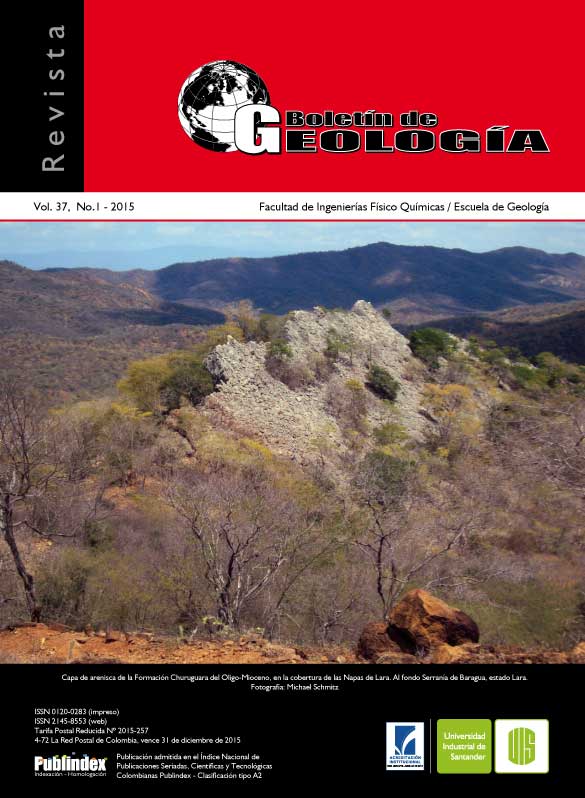VP AND VS DETERMINATION OF THE OUTCROPING ROCK UNITS IN THE MERIDA METROPOLITAN AREA, VENEZUELA
Published 2014-12-18
Keywords
- Seismic refraction,
- compressional wave,
- shear wave,
- rocky outcrops,
- metropolitan area of Mérida
How to Cite
Abstract
For the predominant rock type of outcrops in the surroundings of the metropolitan area of Mérida city,
compressional (Vp) and shear (Vs) wave velocities were determined using seismic refraction. These outcrops correspond to the Sierra Nevada, Tostos, and Mucuchachí Associations, and Palmarito, Sabaneta, La Quinta, Aguardiente, La Luna, and San Javier formations. Vs values for Sierra Nevada and Tostos Associations were estimated from Vp values and laboratory measured Poisson ratio. The length of the seismic lines ranged from 24 m to 26 m, using for all cases 48 vertical geophones and an equal number of horizontal geophones. A sledgehammer was used as energy source. The seismic acquisition was carried out directly from the outcrops. However, for the cases of more competent rocks, the geophones could not be placed directly, so they were inserted in concrete blocks to keep them firm and vertical. The P waves arrivals were obtained via the vertical geophones and the S (SH) waves arrivals were obtained via the horizontal geophones. The results of this investigation offer information of P and S wave velocities of the main surface rock types, which could be useful as complementary data for future deep seismic sounding studies.
